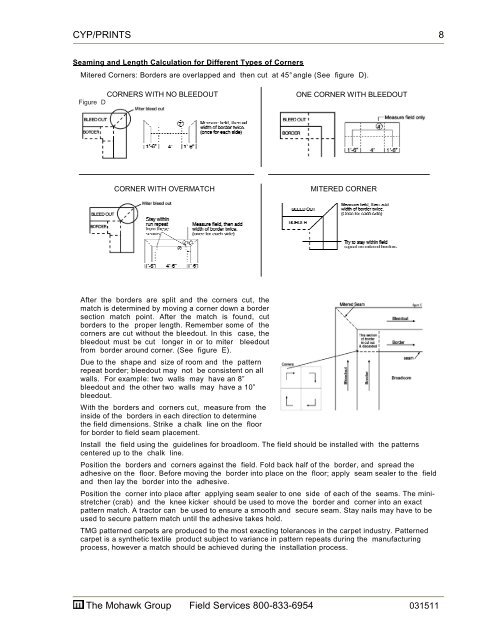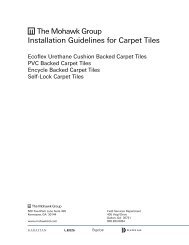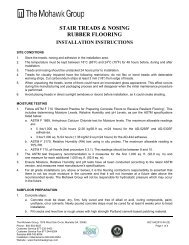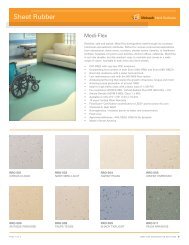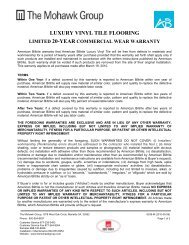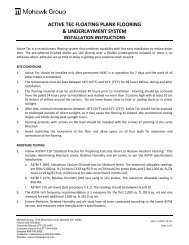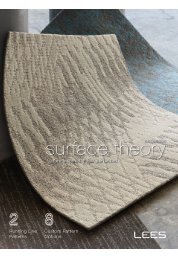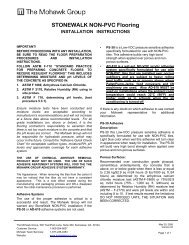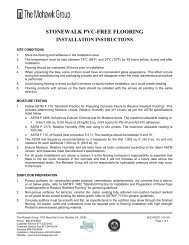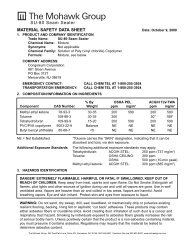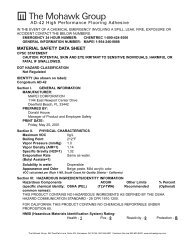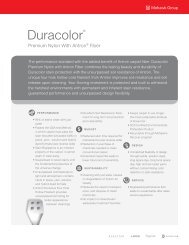Durkan Print - Mohawk Group
Durkan Print - Mohawk Group
Durkan Print - Mohawk Group
You also want an ePaper? Increase the reach of your titles
YUMPU automatically turns print PDFs into web optimized ePapers that Google loves.
CYP/PRINTS<br />
Seaming and Length Calculation for Different Types of Corners<br />
Mitered Corners: Borders are overlapped and then cut at 45° angle (See figure D).<br />
CORNERS WITH NO BLEEDOUT ONE CORNER WITH BLEEDOUT<br />
Figure D<br />
CORNER WITH OVERMATCH MITERED CORNER<br />
After the borders are split and the corners cut, the<br />
match is determined by moving a corner down a border<br />
section match point. After the match is found, cut<br />
borders to the proper length. Remember some of the<br />
corners are cut without the bleedout. In this case, the<br />
bleedout must be cut longer in or to miter bleedout<br />
from border around corner. (See figure E).<br />
Due to the shape and size of room and the pattern<br />
repeat border; bleedout may not be consistent on all<br />
walls. For example: two walls may have an 8”<br />
bleedout and the other two walls may have a 10”<br />
bleedout.<br />
With the borders and corners cut, measure from the<br />
inside of the borders in each direction to determine<br />
the field dimensions. Strike a chalk line on the floor<br />
for border to field seam placement.<br />
Install the field using the guidelines for broadloom. The field should be installed with the patterns<br />
centered up to the chalk line.<br />
Position the borders and corners against the field. Fold back half of the border, and spread the<br />
adhesive on the floor. Before moving the border into place on the floor; apply seam sealer to the field<br />
and then lay the border into the adhesive.<br />
Position the corner into place after applying seam sealer to one side of each of the seams. The ministretcher<br />
(crab) and the knee kicker should be used to move the border and corner into an exact<br />
pattern match. A tractor can be used to ensure a smooth and secure seam. Stay nails may have to be<br />
used to secure pattern match until the adhesive takes hold.<br />
TMG patterned carpets are produced to the most exacting tolerances in the carpet industry. Patterned<br />
carpet is a synthetic textile product subject to variance in pattern repeats during the manufacturing<br />
process, however a match should be achieved during the installation process.<br />
The <strong>Mohawk</strong> <strong>Group</strong> Field Services 800-833-6954 031511<br />
8


